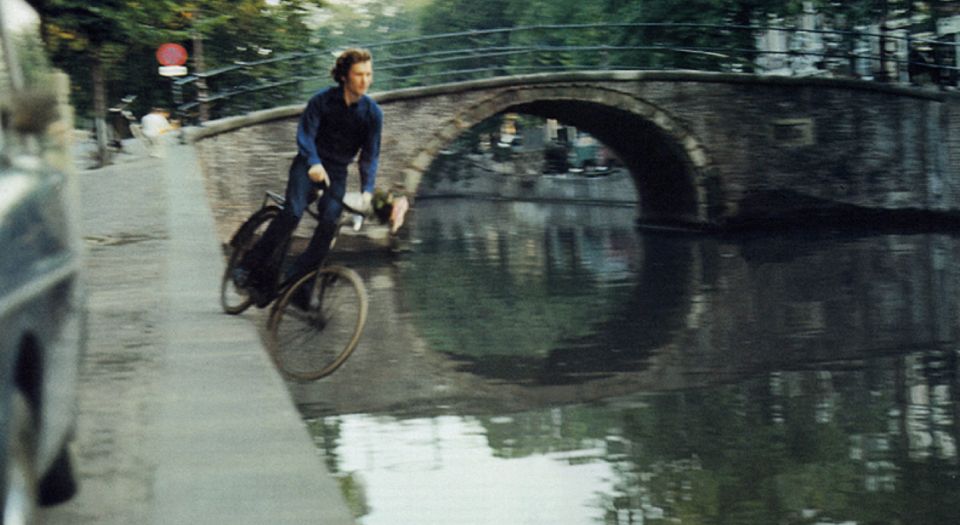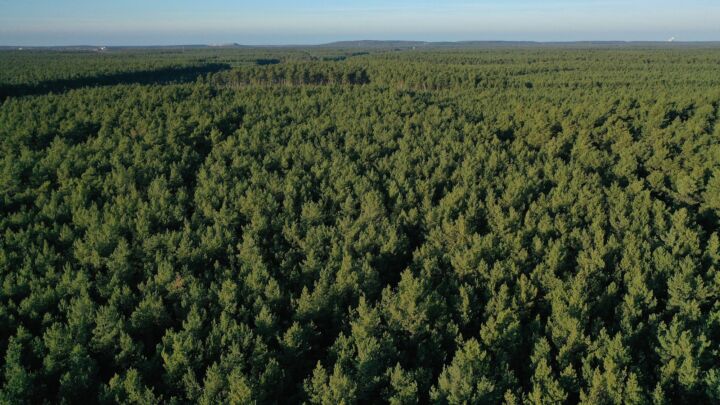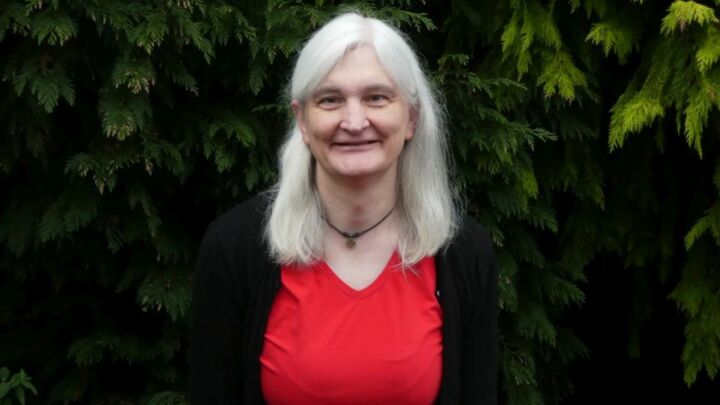
Long-read
The artist who vanished
Bas Jan Ader’s disappearance at sea cemented the legend of this most self-negating of artists.
On 9 July 1975, a tiny dark-yellow yacht (less than 13-foot long) was towed from the bay of Chatham harbour, Massachusetts towards open sea. At the tiller of this yacht was a lean Dutchman named Bas Jan Ader whose intention was to sail singlehanded across the Atlantic Ocean in time to attend an exhibition of his art to be held in his native country. He called his venture an artistic act, entitled In Search of the Miraculous. From the stern of the towboat, Ader’s wife photographed the pilot looking impassively forward past the towboat to the watery immenseness ahead. Ader cast off the towline and sailed eastward until he was a speck on the horizon below an overcast sky. He was never seen again.
The story of Bastiaan Johan Christiaan ‘Bas Jan’ Ader (1942-1975?) seems almost too good to be true. A conceptual artist who erased himself in an act of brilliant nihilism; a heroic individualist who turned his back on the commercialism of an art world within which he was unable to integrate; a troubled man facing personal and professional crises who threw himself into a fatalistic quest, allowing nature to determine his destiny. He seems like the creation of an inventive novelist or an artistic hoax dreamt up in a Hoxton studio, yet his story is true. Two new books examine the artist’s disappearance and artistic legacy.
Alexander Dumbadze’s Death is Elsewhere surveys Ader’s life and work. Dumbadze discusses the art knowledgeably and clearly. He puts Ader in the context of the Los Angeles art scene of the era, helping to clear up some misconceptions modern readers might bring to the subject. Ader moved from his native Netherlands to the US in 1965 to study art in Los Angeles. Ader achieved modest and short-lived success at a young age as a painter following participation in an exhibition in America. By the time he finished his education, he was moving away from painting towards the expanded field of sculpture. In the late 1960s and 1970s, sculpture and painting had expanded to include performances, happenings, conceptual art, films and interventions in the urban and natural environments. For the first time, anything could be art. Ader co-produced a satirical art magazine criticising artistic trends. Ader was critical of the new freedom but also exploited it.
The Fall series comprised several short films Ader made after leaving college. The series depended on the artist placing himself in a situation where natural forces would take control away from him. He fell from a roof, cycled off a quay into a canal and dropped from a branch into a ditch. It was a way of experiencing and demonstrating the precariousness of everyday stability that people take for granted. It was also, paradoxically, a way of asserting control over forces greater than himself by choosing or refusing to put himself in those situations. His films (which can be found on the internet) have resemblances to 1920s silent-film comedies, absurdist drama and home movies.
Dumbadze links Ader’s theatrical relinquishments of will to his Calvinist childhood (his parents had been ministers in the Calvinist church): ‘Failure, in Ader’s initial Fall films, lurks in the overall tragedy of the situations, not a tragedy that is necessarily romantic in the banal sense, but tragedy in the face of an inexplicable fall and the irredeemable loss of free will’, which mirrors the Calvinist theological explanation of man’s fall from grace and his loss of conscious free will.
‘I do not make body sculptures, body art, or body works. When I fell off the roof of my house, or into a canal, it was because gravity made itself master over me.’ In this statement, Ader placed himself not only apart from other artists but on the edge of art itself. Ader seemed more comfortable negating himself than asserting himself.
One of Ader’s performances was reading aloud a melodramatic true story of a boat party being washed over Niagara Falls. With the knowledge of his fate, it is hard not to interpret Ader’s art as prophetically fatalistic. The fascination with falling, losing control, death by water, being unable to communicate meaningfully or leaving an artistic mark, all – in retrospect – seem to prefigure his disappearance. This is surely the last thing the artist would have wanted considering his notorious reticence and unwillingness to interpret his art biographically. Ader often avoided interviews and tended not to discuss his motives or the meaning of his art, even with artist friends. The effectiveness of Ader’s art in large part depends on inscrutability: was the artist serious or joking? Should we consider his art literally or metaphorically? In his art, is idea or physical substance more important?
During the early 1970s, still based in Los Angeles, Ader exhibited his films and photographs at exhibitions in America and Europe. He impressed people with his authenticity, seriousness and determination to become a part of real situations rather than imitating reality. He earned money by teaching at art school. He took up speculating in commodity futures, describing it as a work of art. By the mid-1970s it seemed Ader had reached an artistic cul-de-sac. Though glib it would not be entirely beside the point to think of Ader as struggling to reconcile opposites: America and the Netherlands, action and passivity, art and life, principle and pragmatism. His art became more minimal – sometimes just amounting to instructions to curators.
Then Ader came up with a new project. He would sail across the Atlantic Ocean and document it as a work of art to be called In Search of the Miraculous. He would sail from Falmouth, Massachusetts to Falmouth, Cornwall; a journey he estimated would take between 60 and 90 days. He was an experienced sailor, having learned as a child. He had also participated in a gruelling transatlantic journey on a two-man boat. The pair had sailed from North Africa to Los Angeles via the Panama Canal, a journey of 11,000 miles which several times came close to disaster. Ader was aware that more experienced sailors than he had died attempting to cross the Atlantic singlehanded. His craft, the Ocean Wave, was well appointed but very small. It was self-righting so in the event of capsize the vessel could be saved. Ader stocked it with food supplies for two months and water for three months, which could be supplemented by rainwater and fish. However, the same journey had previously taken experienced sailors over 150 days. He had a distress beacon but no long-distance radio. All this time Ader was under hidden pressure. As he prepared to undertake a perilous journey he was distracted by nagging doubts: his marriage was in crisis and he was unclear about his artistic future – indeed, some friends thought he was close to giving up art altogether.
There are contradictory views about the planned journey. Some say the crossing itself was an act of conceptual art, others that the film and audio recording (which Ader planned to make during the voyage) were to be the artwork. Ader himself was not explicit on the point beforehand. When he reached Europe he would decide what material about his journey would be included in his forthcoming Dutch show.
But he never arrived. In the autumn, searches were conducted to no result. The Dutch exhibition was cancelled. People began to wonder if Ader had deliberately hidden himself – either as an artwork or to start a new life. (Ader had previously mused about disappearing for three years before reappearing.) Then on 18 April 1976 a Spanish fishing vessel discovered Ocean Wave floating vertically in waters south of Ireland. The yacht was righted and pumped of seawater then taken to La Coruña, Northern Spain. Various personal items were found in the cabin, including Ader’s passport. No cameras, tape recorders, logs or journals were present. The life-jacket was absent; the assumption was that Ader was either wearing it when he was separated from the craft or that he had discarded it. There was no clear sign of what might have befallen the Ocean Wave and its pilot. Full forensic scrutiny of the Ocean Wave was not possible. Soon after it was delivered to Spanish authorities the boat was stolen. Its fate – like that of its pilot – is unknown.
In Search of the Miraculous: Discovery File is a collection of documents relating to Ader’s disappearance. Facsimile reproductions of letters, official documents and newspaper cuttings in Spanish and German are supplemented by translations into English. Two interview transcripts fill out the story. There are a few tantalising clues, such as mention of evidence of an explosion of the propane stove which damaged the hatch. However, the theft of the boat prevented forensic confirmation of that supposition. The book allows readers to examine the scant clues regarding Ader’s disappearance and it acts as proxy documentation of his last project.
Only since a series of exhibitions starting in the mid-1990s has Ader’s art become well known in the international art world and influential among contemporary artists. Ader is a touchstone for contemporary artists because of his perceived originality and integrity. As contemporary art becomes ever more self-referential, repetitive and hollow, artists allude to Ader to accrue gravity and credibility. These referential art works fail because the simple facts about Ader’s life and disappearance, documented in a straightforward manner, are always more intriguing and powerful than what third-rate artists do with that story.
Ader’s disappearance – regardless of whether it was planned or accidental – has a kind of simplicity and emotional power that is as haunting as any work of art.
Alexander Adams is an artist and writer. His latest book, Letter About Spain, is published by Aloes.
Bas Jan Ader: Death is Elsewhere, by Alexander Dumbadze, is published by University of Chicago Press. (Buy this book from Amazon(UK).)
Bas Jan Ader: In Search of the Miraculous: Discovery File 143/76, edited by Marion Van Wijk and Koos Dalstra, is published by New Documents. (Buy this book from New Documents.)
Picture: Copyright the Estate of Bas Jan Ader / Mary Sue Ader Andersen, 2017 / The Artist Rights Society (ARS) New York and DACS, UK. Courtesy of Meliksetian | Briggs, Los Angeles.
To enquire about republishing spiked’s content, a right to reply or to request a correction, please contact the managing editor, Viv Regan.






Comments
Want to join the conversation?
Only spiked supporters and patrons, who donate regularly to us, can comment on our articles.